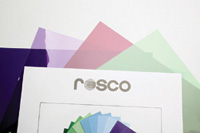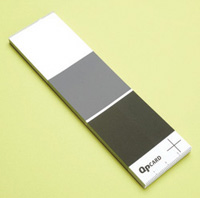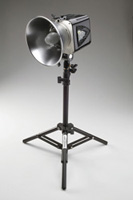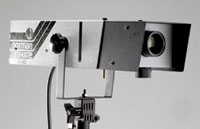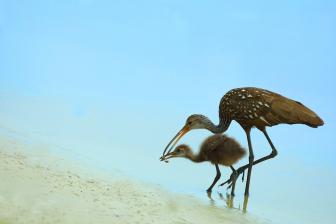10 Must Have Studio Accessories
The Stuff I Use Nearly Every Day
Over the years I've often
written about shooting in the studio. Whether it's a huge commercial
studio with a 30 foot wide cyclorama wall or the basement of your home,
having an organized space with some decent lighting equipment is a tremendous
asset. |
|
1. Clamps--I
live on clamps. I use clamps by the bucketful. From clamping a sheet of
foamcore to a light stand to pulling a model's blouse tight to eliminate
wrinkles, clamps are where it's at. I have a bunch of different
faves, but the obvious choice would be the ubiquitous Pony clamp. Back
in the old days photo shops charged upward of $6 each for these, but now
I find them in my local home improvement center for around $1-$2 each.
The black plastic clamps with the rotating opposable red jaws are excellent
for clamping stuff to 2x4s, and the very small metal clamps used by upholsterers
are good for fashion shoots. I also keep a bucket full of old-fashioned
wooden clothespins around, and they're excellent for clamping gels
to barn doors. (Try and find a movie set without a bucket of clothespins!) |
|
3. Calibrated Gray
Card--Especially with digital imaging, photographers are
learning that a reliable image of white, gray, and black is super handy.
While the cardboard Macbeth Color Checker and the ever-popular Kodak 18
Percent Gray Card are studio legends, I've become very attached
to these little QP Cards, which are calibration cards with sticky backs
that come in packs of 15. Since my Macbeth and Kodak charts are dog-eared
and dirty, the idea of a fresh reference card every couple of weeks is
pretty cool. I stick them on products and on models. |
|
4. Magic Arms--One
of the great mysteries of the photo world...how do Magic Arms work?
These Manfrotto Magic Arms are the glue that holds the photography and
film world together. You see them on every movie set, clamped to every
NBA backboard, inside the cockpit of fighter jets, wherever dramatic photos
need to be taken or where light heads need to live. It's literally
an arm with a rotating wrist at both ends, a swiveling elbow in the middle,
and a single control that locks it all surprisingly well. |
|
6. Monolights--Even
though I use a full Balcar Source lighting system in my studio, I've
found that there are always times when you just need one more light head.
On location shoots I always have a need for a head a long distance from
the main strobe pack. Rather than run miles of pricey light head extension
cable, I've resorted to a few compact moonlights. |
|
8. Focusing Spotlight--It
seems that photographers fell in love with umbrellas and softboxes to
a ridiculous extent. For most of the 1980s and '90s everything was
soft and sensuous "window light." Softboxes are great, but
every good studio photographer should own both a set of inexpensive grid
spots for converting a standard reflector into a focused light source,
and a focusing spotlight. I own a Norman Trilite (modified for use on
my Speedotron packs), which is an excellent focusing unit. The Trilite
looks like a slide projector with a strobe tube inside, and offers a variable
image circle, true focusing lens, and the ability to project everything
from steel masks to actual transparencies onto a surface. I use mine all
the time. |
|
10. Cinefoil--The
most often overlooked accessories around most photo studios are weird
light shaping devices. Sure everyone has a set of barn doors and a few
sheets of foamcore, but what about interesting ways to shape light? Well
for years I've been purchasing large rolls of Rosco Cinefoil from
my local theatrical lighting supply house. |
|
So there you have it--lots of smart and usually cheap ways to enhance your own studio. There are probably 100 other weird and interesting tools that I use on a daily basis, everything from Lektro-Stik wax to Formica laminate surfaces, and I'm sure that you'll find a few must-haves of your own. Manufacturers/Distributors AlienBees Bogen Photo Corp. Calumet Photographic (QP Card) Photo Control Corporation Rosco Laboratories Inc. Wein Products Inc. |
- Log in or register to post comments

